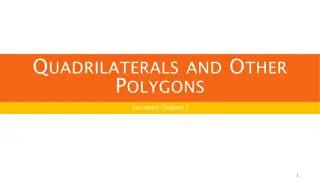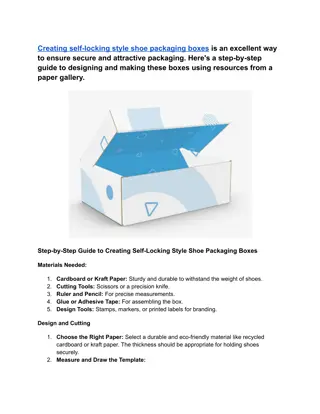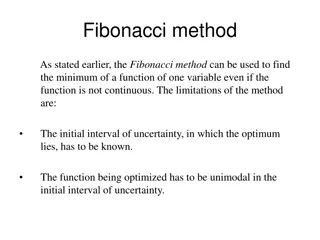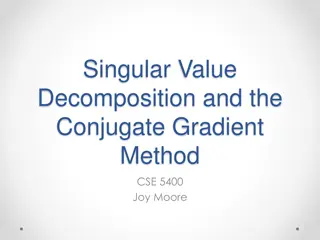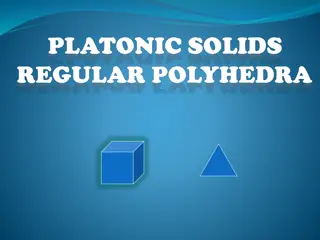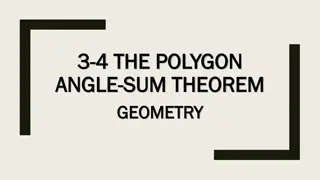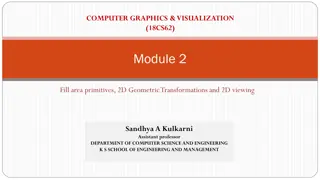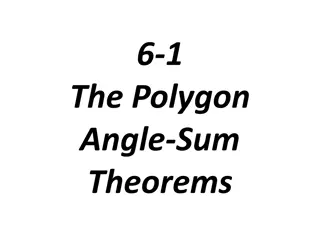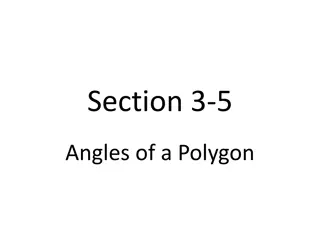Understanding the Shoe Lace Method for Finding Polygon Areas
The Shoe Lace Method is a mathematical process used to determine the area of any polygon by employing coordinate geometry. By following specific steps, including organizing coordinates, multiplying diagonally, and adding columns in a certain manner, the method allows for a straightforward calculation of the polygon's area. Furthermore, understanding determinants and their relation to parallelograms and triangles enhances the comprehension of why and how the Shoe Lace Method works effectively. The method's practical application is illustrated through examples, emphasizing the importance of maintaining consistent directions and repeating initial coordinates. In addition, the concept of determinants, particularly (bc-ad), plays a crucial role in calculating the area of triangles formed by given coordinates. Overall, the Shoe Lace Method offers a systematic approach for determining polygon areas based on coordinate information and mathematical principles.
Download Presentation

Please find below an Image/Link to download the presentation.
The content on the website is provided AS IS for your information and personal use only. It may not be sold, licensed, or shared on other websites without obtaining consent from the author. Download presentation by click this link. If you encounter any issues during the download, it is possible that the publisher has removed the file from their server.
E N D
Presentation Transcript
Math 9 Honors Shoe Lace method:
What is the Shoe Lace Method? The shoe lace method is a process for finding the area of any polygon when you have the coordinates of the vertices 4 2 Place the coordinates in a column, starting in a CW direction = 4 = 18 = 2 6 24 Make sure you repeat the first coordinate that was used Multiply diagonally for each column Add each column: = 3 8 16 48 = 24 = 94 94 = = = 6 6 4 2 ( ) 18 12 70 3,8 Subtract the columns and divide by 2 to get the area ( ) ( ) 6,6 2,6 70 A 2 ( ) 4,2 = 2 12 units
Practice: Find the area of the following shape: Place the coordinates in a column, starting in a CW direction Subtract the columns and divide by 2 to get the area 0 5 Make sure you repeat the first coordinate that was used = 15 = 42 = 30 = 8 = 0 = 0 3 7 = 6 6 18 Multiply diagonally for each column 5 2 4 2 0 5 Add each column: = = = 12 10 20 ( ) 3,7 ( ) 6,6 95 60 ( ) 0,5 95 60 = A 2 ( ) ( ) 5,2 4,2 = 2 17.5 units
Why the Shoe Lace Method Works? (Part 1) The first part of understanding why the Shoe Lace Method works is knowing what a Determinant is: When given two coordinates (a,b) and (c,d), the determinant is: Det bc = ( a c b ad ad d = = of Parallelogram of Triangle Area Area = Det ) 1 2bc a c ( ) a c b d + + , ( )( ) + + + =cd =ab =2ad A A A A A A = = a c b d + ab ad + + bc 1A cd 2 3 A = + + cd 3 d 2 4 5 = 6 A ad b 6 7 a ab A = ( ) , a b 5 A1 ( ) ( cd + ) ( ab bc ) =Parallelogram 2 ab ad + bc + + = Parallelogram A A A A A A 2ad 2 A ( ) A = , c d a 1 + 2 + 3 4 5 6 7 4 2 ab cd ad ad =Parallelogram = 7 A ad d d cd A = 2 2 bc =Parallelogram =Triangle c
Determinant: (bc-ad) Half the determinant of (a,b) and (c,d) will give the area of the triangle created by these two points and the origin 2 6 4 2 Det 1 2 = 2 2) 24 ) 1 2(6 4 ( 2 = 10 = 4 1 If the coordinates are switched, the area becomes negative 4 2 2 6 1 2 = 10 = Just take the absolute value to get the area ( ) 2,6 = 4 6) 4 24 ) Det 1 2(2 2 ( 1 2 ( ) 4,2 ( ) 0,0
How the Shoe Lace Method Works (Part 2) When we use the shoe lace method, we are taking the determinant multiple times 2 6 ( ( ( ( ) ) ) = A = = 1 218 16 1 = 18 = 48 = 16 3 8 1 ( ) 3,8 A = = 1 248 18 15 = 6 6 18 2 ( ) A = A = = 1 224 12 ( ) 24 = 4 = 6 10 6,6 = = 4 2 2 6 12 24 2,6 3 ) 1 24 24 4 ( ) 4,2 = + + 6 10 + A A 1 15 = + 12units = A A A 1 2 + 2 3 4
Practice: Find the area of the shaded regions: Find the point of intersection first =2 = 12 30 5 Diagonal #1: y y x x ( ) ( ) 5,12 30,12 Diagonal #2: 12 35 5 = 2 12 5 60 5 y x = 2 14 y x 2 5 12 30 5 2 + = x y = = = m 1A 5 5 x x + ( ) ?,? ( ) 17.5,7 = = 2 5 5x = x + 5 2 2 2 5 14 5 7 = x = 7 y = 10 70 + 14 y Solve for Intersection point ( ) ( ) 35,0 0,0 x 0 0 5 12 = + 14 y 4 x 210 35 = 0 = 0 = A 1 2 17.5 7 0 0 0 = 210 2 210 = = 35 175 2 A = 17.5 1 = 35 0 175 2 175 = 2 BOTH A
Ratios of a Trapezoid + + = 2 2 2 x y xy Area of Trapezoid 2 x xy xy + + 2xy =25 35 25 5 2 + 35 7 2 12 2 y 2 + 74 5 2 2xy =60 12 2 = 2xy =144 5 74 5 2 175 2 2xy = 2 2 2 x 175 y 25 ( ) ( ) 5,12 30,12 5 = 35 7 2 25 5 2 2 7 = ( ) 35,0 35






